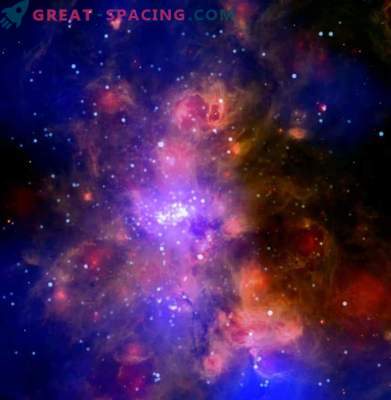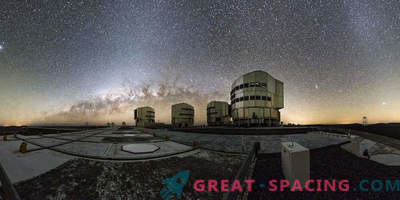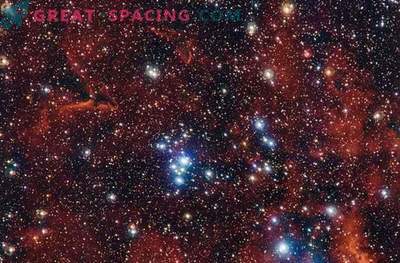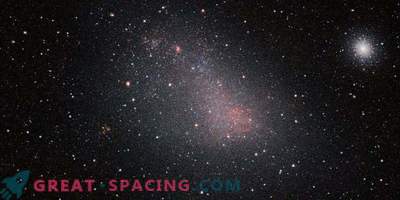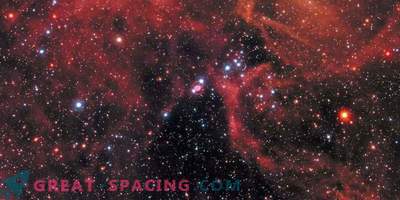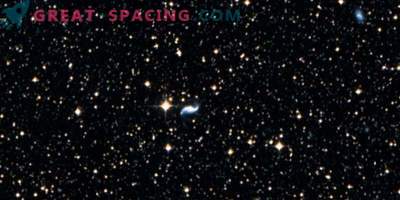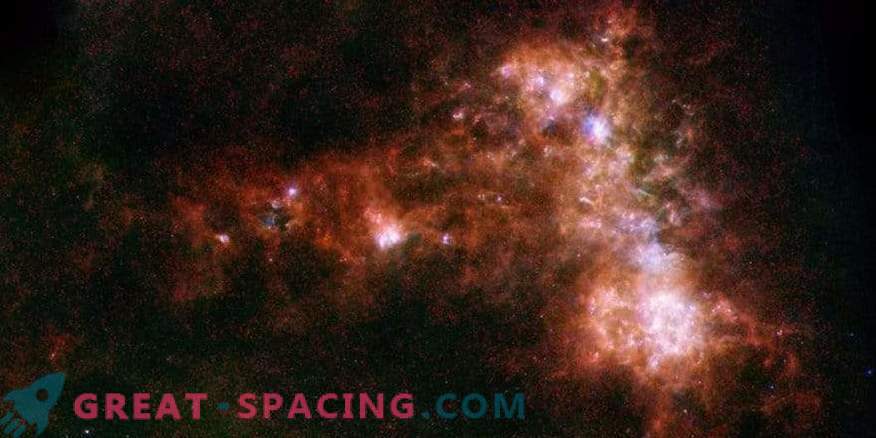
The Small Magellanic Cloud is observed in IR light. This view will change if you follow the object at other wavelengths.
We literally bathe in the starlight. During the day we watch the sun, and at night we admire the stars and the moon. But these are not the only ways to view space. In addition to light, there are gamma, x-rays, UV and IR light, as well as radio waves.
X-ray
Did you look at the earth satellite in the afternoon? At this time, you can see only part of the moon, bathed in sunlight, as well as blue sky. But now look at the X-rays from the satellite ROSAT.
The sun releases x-rays, so you can see the day side of the moon, but the x-ray sky is located behind the earth satellite! What is x-ray sky? X-rays are much more energetic than photons of visible light, so the former often come from the hottest celestial objects. Most of the X-ray sky is created by active galactic nuclei.

The moon behind the blue sky
Radio heaven
If the southern sky is available to you, and you have climbed away from light pollution, then you can see the Small Magellanic Cloud - a neighbor of the Milky Way. With the naked eye you will notice a diffused cloud. Radio waves open up a new look, showing atomic hydrogen gas. It's cool enough for atoms to hang on their electrons. Also, the temperature can drop and then the gas will collapse, creating clouds of molecular gaseous hydrogen and new stars.

Moon in X-ray review of ROSAT. The night side looms on the background of X-rays
Thus, radio waves allow us to consider the fuel for the process of star birth.
Microwaves
If the Universe were infinitely huge and ancient, then in each direction there should be a lot of stars. So we must get a bright sky. This statement led to the Heinrich Olbers paradox.
Looking at the sky, you can find stars, planets and other objects. But the background remains black. Why?
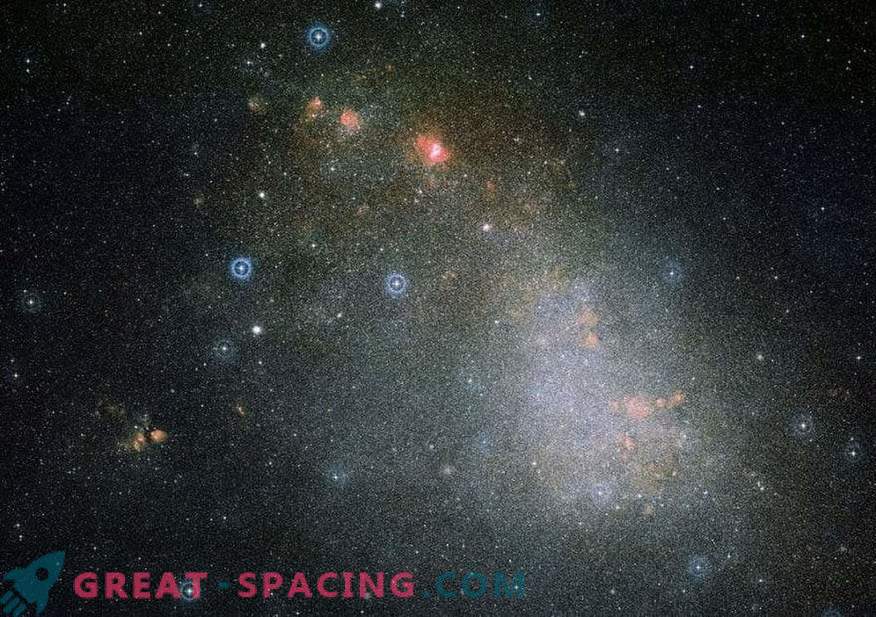
Green light dominates images of the Small Magellanic Cloud made in visible light.
Let's look at the space in microwaves. To do this, use the satellite Planck. Suddenly a light appears in all directions. How so? The fact is that this tool shows us the afterglow of the Big Bang. It appeared 380000 years after the event, when the temperature of space was heated to 2700 ° C. But now we see a glow at a temperature of -270 ° C. The fact is that the Universe continues to expand, and the observed light is stretched from the original.

Radio waves are able to track hydrogen gas in the Small Magellanic Cloud
Radio waves for planets
Jupiter is one of the most suitable planets for viewing in a small telescope. You can see the cloud belts, as well as 4 large satellites found by Galileo. But radio waves show the dim warm glow of the planet itself. Most of the radio-beam of Jupiter is created by synchronous and cyclotron radiation.

The stellar glow of the Milky Way dominates in images of visible light.
On Earth, particle accelerators are used to obtain such rays, but Jupiter creates them in abundant quantities in a natural way. This synchrotron is so powerful that you fix it from the Earth with the most primitive equipment.
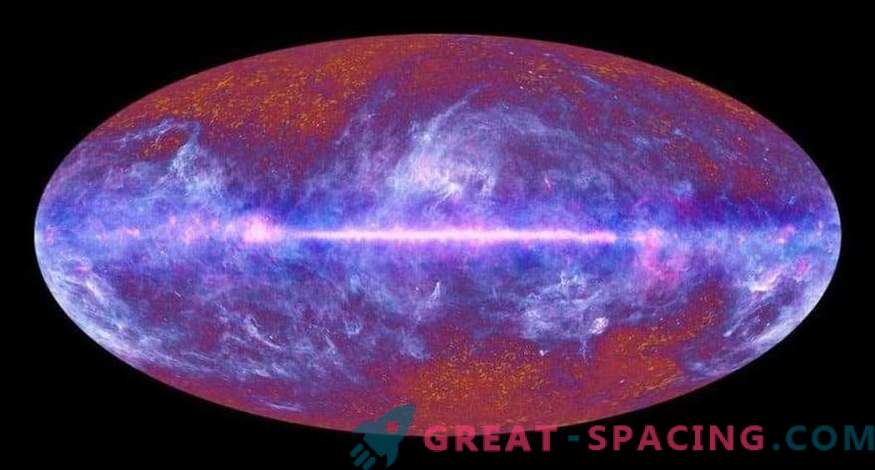
Microwave sky shines in all directions.

